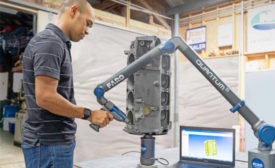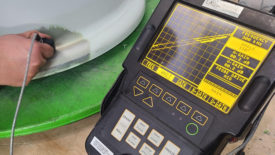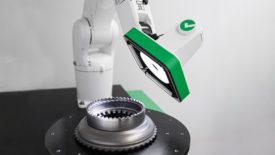Home » Keywords: » inspection
Items Tagged with 'inspection'
ARTICLES
Sponsored Content
Aerospace leaders mitigate risk with manufacturing processes
April 1, 2024
Edge Learning
How Harnessing Edge Learning AI Technology Simplifies Manufacturing Processes
The combination of machine vision and edge learning is a powerful tool that can aid the manufacturing process in numerous ways.
March 11, 2024
The Quality Show South
Podcast: An Aerospace Whistleblower Shares His Story
February 29, 2024
Quality Headline
FAA Halts Boeing Expansion; Sets Inspection, Maintenance Requirements
January 25, 2024
NDT | Inspection
Nondestructive Testing (NDT) of Commercial Aircraft Wheels
The main flaws uncovered by NDT on the wheels are cracking, corrosion, geometrical distortion, and overheating.
January 15, 2024
Software
AI and Automation Technologies Converge to Simplify Automated Visual Inspection
Machine vision, AI, robotics, and intelligent inspection planning technologies working in synergy help democratize industrial automation systems.
December 29, 2023
The Quality Show Preview
Inspection vs. Auditing: A conversation with John Vandenbemden
October 5, 2023
Speaking of Quality | John Vandenbemden
Auditing vs. Inspection
Even though there are similarities, these tools have different intent.
May 17, 2023
EVENTS
Webinar
9/13/23 to 9/13/24
Contact: Meg M.
How to Reduce First Article Inspection Creation Time by 70-90%
Get our new eMagazine delivered to your inbox every month.
Stay in the know with Quality’s comprehensive coverage of the manufacturing and metrology industries.
SIGN UP TODAY!Copyright ©2024. All Rights Reserved BNP Media.
Design, CMS, Hosting & Web Development :: ePublishing









